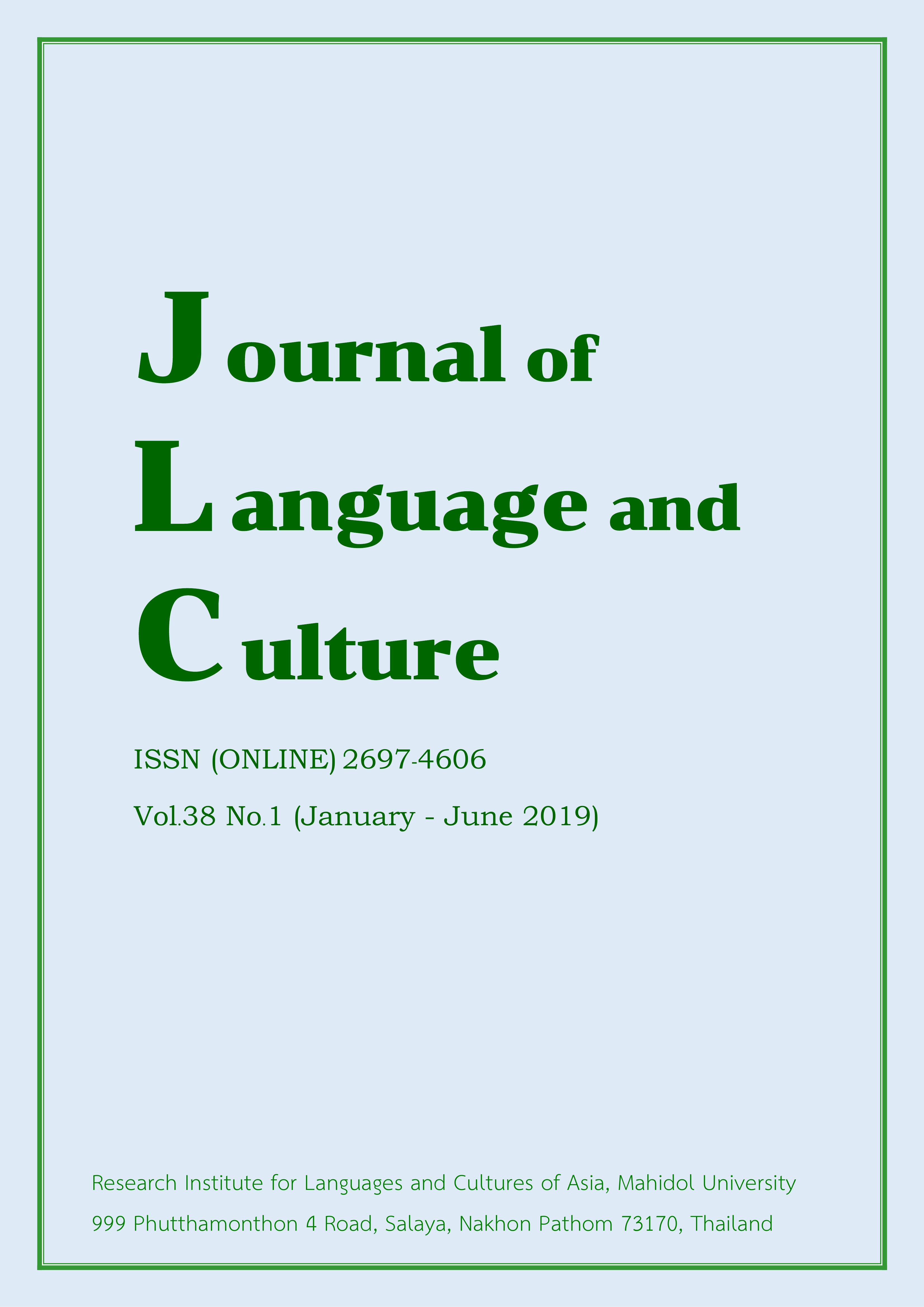“HEART” metaphors and its Chinese cultural origins: Analysis based on conceptual integration theory
Main Article Content
Abstract
The purpose of this research paper is to study and analyse the “HEART” metaphors in Mandarin Chinese, especially those used in conjunction with words for other body parts, by applying cognitive linguistics theories related to conceptual metaphors and conceptual integration. In addition, the metaphorical process of the word “HEART” in Chinese is also examined. Words referring to other body parts found in this research included intestine, liver, stomach, chest, gallbladder, flank, blood, head, eyes, bone and bone marrow. When “HEART” is used with these words in Chinese, it becomes a metaphor whose figurative meaning relates to human beings. “HEART” metaphors may refer specifically to an individual human or to other human qualities such as thoughts, feelings and personalities. The metaphorical process of “HEART” in Chinese involves a conceptual blending process of mental spaces, which begins from two input spaces and relies on the important shared semantic properties of the generic space to be selectively projected to the blended space. The results of this research also illustrate Chinese language users’ notion of “HEART”. They view “HEART” as being not only the master of the body but also of the human soul and intelligence. It commands and co-ordinates holistic bodily functions as well as directs other body parts to perform and promote the balance of physiological functions in order to create an organic life system. The unique holistic and systematic thought process of the Chinese therefore regards “HEART” as the main leading organ, emphasizing its connection with other body parts. This manner of thinking, which is reflected in the metaphorical process of “HEART”, do has a proximate relationship with the classical Chinese philosophies of “correspondence between human and nature” and “harmony between human and nature” and has also been influenced by the Chinese medical theories of “holistic concept” and “balanced concept”. Moreover, such thinking may be seen as an inheritance and expansion of the “Yin-Yang” and “Five Elements” concepts, which have encapsulated the essence of traditional Chinese culture for five thousand years.
Article Details
The articles featured in the Journal of Language and Culture (JLC) constitute academic works representing the viewpoints of the respective author(s). It is crucial to note that these opinions do not necessarily reflect those of the Editorial Board.
All articles published in JLC are released under the Creative Commons Attribution 4.0 International License (CC BY 4.0). This license grants permission for unrestricted use, distribution, and reproduction in any medium, provided proper credit is given to the original author(s) and the source.


